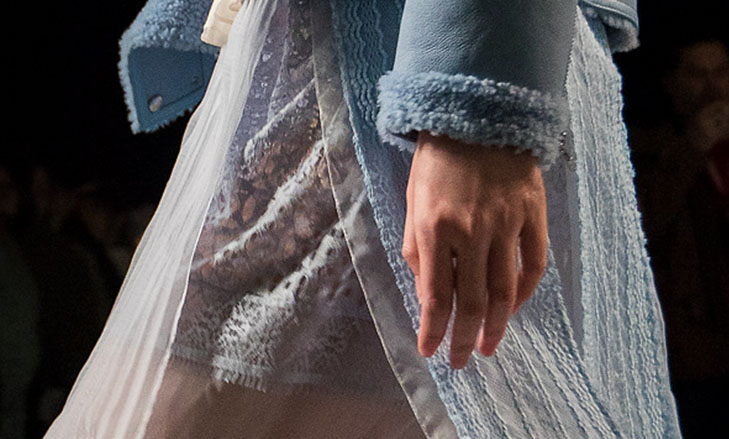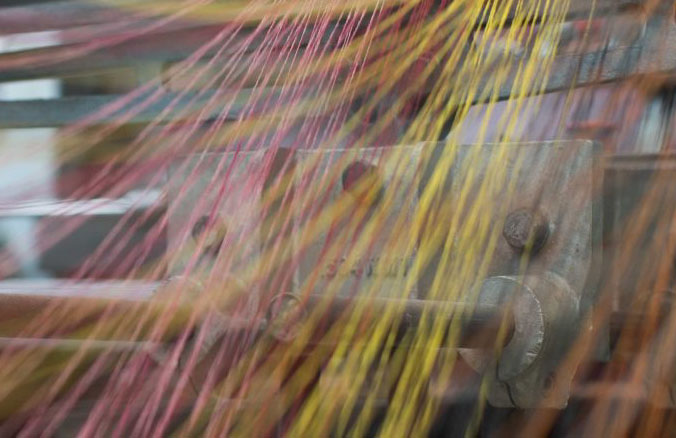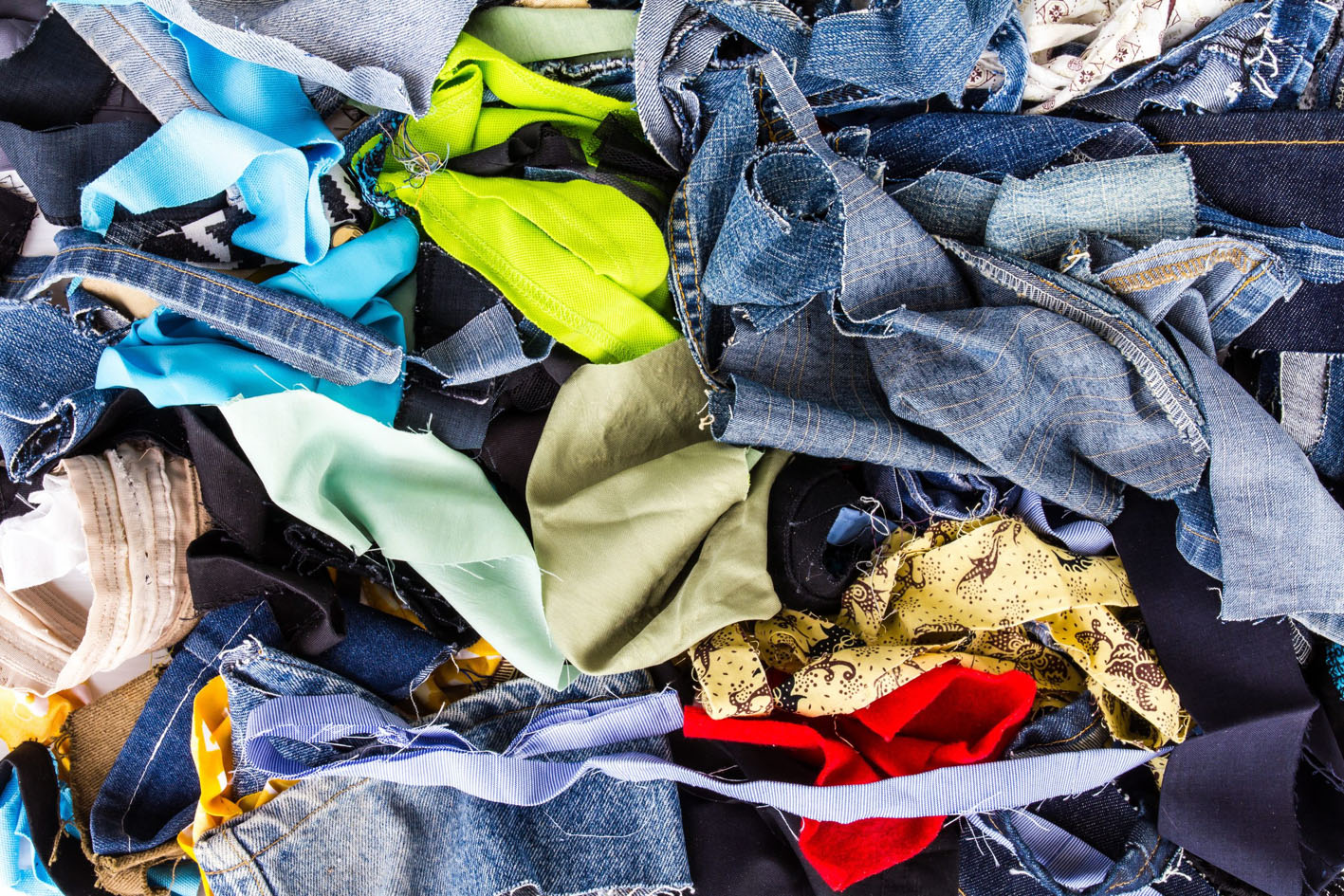
Minus33 takes back part of its heritage
Adam Mansell, CEO of UKFT, outlines five priorities for the UK’s fashion and textiles industry in 2021.

17th May 2021
Innovation in Textiles
|
London
The impact of Brexit and Covid-19, combined with environmental concerns and changing consumer behaviour, means there has never been a better time for reshoring UK fashion and textile manufacturing at scale.
For many businesses 2020 was a year of survival. For a lucky few it, turned out to be extremely profitable but sadly for others the twin pressures of Brexit and Covid-19 proved too much. These circumstances exposed significant weaknesses in the fashion and textile supply chain – weaknesses that many of us already knew were there but with an industry built on endless consumption, most of us chose to ignore.
Many small UK businesses have simply stopped trading with the EU
The immediate impact of Brexit has been to negatively impact the supply of goods and talent, while Covid-19 crippled demand.
The full extent of the two events is still unravelling, however research commissioned last summer showed that the combined effect could be twice as hard on the fashion and textile sector as compared to the UK overall.
To put that into context, the research predicted:
-240,000 direct job losses
-GDP of the sector falling by almost £9 billion
-Lost revenues likely to exceed £100 billion
Pre Brexit, the EU accounted for 76% of the industry’s exports and the EU supplied over 30% of imports.
Fundamental change
We haven’t yet seen a full quarter’s trade figures but across January and February clothing exports to the EU fell by 60% with exports of textiles falling by 33% and in the same period clothing imports from the EU were down by 50% and textile imports down 29%. This huge dip in EU trade has not been replaced with any increase in non-EU trade.
Brexit fundamentally changed the way we trade with the EU. It sounds obvious but for many, the realities of doing business post-Brexit came as a complete shock.

Many assumed the announcement of a deal on Christmas Eve meant that would carry on much as before. Instead, they discovered shipping costs doubling or even quadrupling. A mountain of new paperwork for every trade with or from the EU, and even paperwork when shipping to Northern Ireland.
Suddenly there was import VAT due on anything bought into the UK and import VAT on anything sent to the EU and with varying VAT rates across member states and VAT reclaims having to be submitted to individual tax authorities in France, Spain, Italy and more.
The high-end fashion industry discovered that models couldn’t travel to the EU for catwalks or photoshoots without a work visa. The same applies to stylists, make-up artists and photographers too.
Sending a sample to an EU magazine involves paperwork, VAT and tariffs and the same rules apply to dealing with returns from EU customers. Now if you want to attend an EU tradeshow you need a temporary export licence for your products.
Rules of origin
But the biggest impact of all has been in the changes in the rules of origin that dictate whether tariffs are due. The UK-EU Trade Continuity Agreement has a section dedicated to the rules covering fashion and textiles. It is around 20-pages long and the implications are crucial because if a product doesn’t meet the rules of origin, there are tariffs to pay on both exports to the EU and imports into the UK. These tariffs average 12% on garments, 8% on fabric and 4% on yarn.

The rules mean that to be classed as UK made, fashion and textiles have to undergo a double transformation. So, in simplistic terms for a fabric to be classed as UK made the yarn has to be spun in the UK and the fabric woven in the UK. The deal does allow you to use EU product and still claim origin so using Italian yarn and weaving in the UK is ok. But the impact for fashion manufacturing is greater as the fabric and the CMT (cut, make and trim) has to be from the UK or the EU in order to claim origin. So a dress made in the UK using Indian silk fabric faces a 12% tariff duty if sold to the EU.
Free circulation
To make this situation more complex, there is the issue of free circulation. In its simplest form, this means that duty free only applies for the trade journey of a product. This means that if a brand sends UK fabric to Portugal to be made into a jacket and brings the jacket back to the UK, all of that can be done duty free. But if the brand then sells that jacket to a French customer there is a 12% duty payable.
This has all had an enormous and immediate impact. Many companies have reported accounts they have lost due to these new complications or deliveries that used to take 48 hours taking six weeks. Product has been stuck at customs due to changes in labelling requirements, while consumers have been handed bills for local tax and VAT that are twice what they paid for the original product.
Many small businesses – and in our industry 80% of business are micro SMEs employing less than nine people – have simply stopped trading with the EU. Others have moved their entire operation to the EU. Even large companies have found the complexities of trading with Northern Ireland too difficult in the short term.
As a result, Brexit has without any doubt made things more difficult, costly and time consuming. While we haven’t seen this create significant changes to the industry yet, Brexit and other trade pressures (such as being caught in the cross-fire of international disputes about airplane subsidies and digital services taxes), combined with the impact of Covid-19 and environmental concerns, will see a huge shift in the sector.
We’ve already started to see a change in the high street with a number of well-known casualties. However, some of these closures were due less to the immediate impact of Brexit and Covid-19 and more due to long-term issues.
Outsourcing
The global apparel market has been characterised by the almost total outsourcing of manufacturing to those countries with the lowest labour costs. This is a model that requires large batch processing with long lead times for manufacturing and shipping with market response times of 6-9 months or more.
It has been estimated that 10-15% of the UK’s apparel needs could be cost-effectively on-shored today
We have a retail industry obsessed with gross margin, forcing buyers to chase the cheapest needle around the planet. This leads directly to huge inventories, which are now bigger than ever as companies are sitting on a year’s unsold stock. This huge excess stock in turn leads to high write down costs with significant amounts of product only ever being sold at sale prices and consumers taught to never pay full price. Add in lost sales due to long, complex supply chains unable to meet consumer demand and it’s not surprising we’ve lost some well-known names – in fact it’s more surprising that we’ve lost so few.

The demands placed on the apparel sector to transform to a sustainable, environmentally responsible and ethical model have never been stronger. Circularity, decent pay and working conditions and a transparent use of resources now dominate the agenda of all progressive major retailers and brands in the UK, and around the world.
Consequently, there has never been a better time for a revival of UK manufacturing and for reshoring at scale.
In 2018 the McKinsey Apparel Manufacturing Coming Home? report showed that the economics for UK manufacturing worked but that we lacked the apparel ecosystem to support volume reshoring. A recent university study estimates that 10-15% of the UK’s apparel needs could be cost-effectively on-shored today.
But to make that a reality, five things need to change:
1. Retailers will need to pivot their business models to focus on net margin and accept the need for closer co-operation and investment to build a sustainable, long term, UK manufacturing supply chain.
2. The UK Government needs to change the rules on public procurement so that a minimum of 10% of spend has to be with UK manufacturers. Clothing just 10% of the armed forces, the police and rescue services and the NHS is a once-in-a-lifetime opportunity to provide a much-needed boost for business, employment and tax revenue, as well as the sustainability and long-term viability of our sector. This isn’t pie in the sky thinking. The UK Government recently told the renewable energy industry that they wouldn’t receive government subsidies unless they committed to sourcing from the UK manufacturers. If they can do it for windfarms, they can do it for fashion and textiles.
3. As an industry, we need to recognise the breadth of the UK fashion and textile sector and the possibilities of new opportunities. We already have UK made textiles used in the automotive industry and even in Space, with the parachute of the recent Mars lander being made in Devon. But there is more to be done in agriculture, where a million miles of fleece fabric is used each year, or the wet wipe industry, which is worth $12 billion a year. We also need to work more closely with our academic institutions to ensure businesses can harness our world-leading R&D, for example by commercialising materials like graphene and spider silk. Or more simply, how about more than one UK button or zip manufacturer?
4. We have to build factories supported by bleeding-edge automation, artificial intelligence planning systems with manufacturing technologies that will deliver a high-degree of flexibility and cost-effectiveness. We need manufacturing parks sitting alongside a new, nationwide, recycling infrastructure.
5. We need to develop a skills and careers programme to match the needs of the industry in 2030 and beyond. We need to put pride back into careers in making things and we have a great deal to do to promote the sector to attract young people with IT skills or expertise in finance, business, chemistry, physics and biology.
None of these changes are impossible, and none are new. But Brexit and Covid-19 have bought things in to sharp relief. We need to use the impetus of the opening up of the economy and the change in our trading relationships to build back better and to make the changes that we all know need to happen.

Business intelligence for the fibre, textiles and apparel industries: technologies, innovations, markets, investments, trade policy, sourcing, strategy...
Find out more